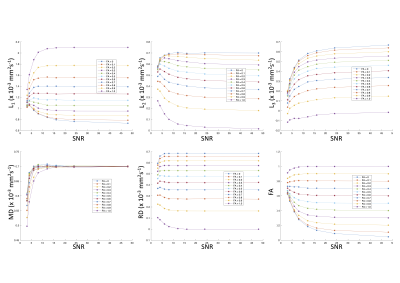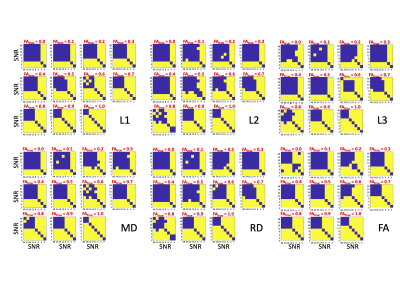Samuel Bryce Jones1, Emre Kopanoglu2, Chantal Tax2, and Derek Jones2
1Radyr Comprehensive School, Cardiff, United Kingdom, 2CUBRIC, School of Psychology, Cardiff, United Kingdom
1Radyr Comprehensive School, Cardiff, United Kingdom, 2CUBRIC, School of Psychology, Cardiff, United Kingdom
We explore the extent to which reductions in SNR can be accounted for by signal averaging in diffusion tensor MRI experiments. Different metrics have different tolerances to reductions in SNR. We discuss how the rectified noise-floor and eigenvalue repulsion underpin these different results.

FIGURE 3 - The 'classical' view of impact of SNR on eigenvalues, mean diffusivity, radial diffusivity and fractional anisotropy. In this simulation, the number of averages was not increased to compensate for the loss of SNR. This result provides useful insights into the impact of noise. E.g. we see both over-estimation of the largest eigenvalue (when FAtrue is low) and under-estimation (FAtrue is high), in line with previous literature1,2 on repulsion and squashing peanuts

FIGURE 2 - Results of pair-wise t-tests, between all possible [SNR, N] couples. Blue entries show where the hypothesis that the samples come from the same distribution cannot be rejected at the p < 0.05 level. Yellow entries are where we have to reject this hypothesis and deem that the means are significantly different. Note the pattern depends both on FAtrue and on the metric itself.
